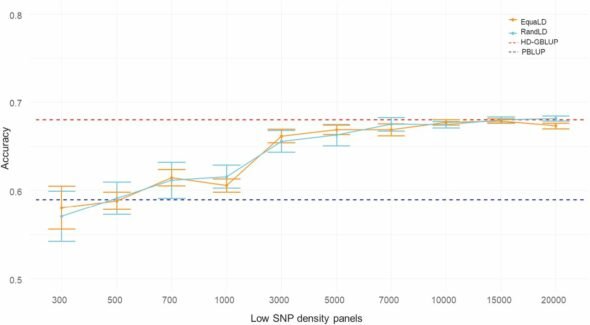by Reidun Lilleholt Kraugerud, Nofima
Scientists have developed a tool that makes it possible to lift cod breeding from family selection to individual selection – thereby increasing genetic gain.
“We have now tailored a genomic tool for cod, that is, we can breed based on the good traits of individuals. The tool is openly available and well timed seeing that cod farming is on the rise again. It can contribute to more efficient seafood production”, says scientist Anne Kettunen.
Nofima senior scientist Luqman Aslam is a specialist in developing such tools and has done so together with Kettunen.
From family breeding to individual breeding
Although siblings inherit half of their genes from their mother and half from their father, siblings are often very different from each other. Just look at the people around you. These differences are the starting point for the new ‘SNP panel’ tool (SNP is pronounced snip and stands for ‘single nucleotide polymorphism’).
“This is probably the first medium density SNP panel suitable for both research and commercial use in cod breeding programmes”, says Aslam.
Nofima’s cod breeding programme currently uses family selection based on relationships, i.e., they breed from siblings of cod that have been tested for selected traits and passed. But siblings can be very different, despite them having an average of 50 percent of the gene variants in common. A cod can have significantly more or less than 50 percent in common with its siblings, just like us.
So-called genomic tools now allow cod breeding programmes to consider that siblings inherit different gene variants from their parents. In the same way that DNA samples from traces and suspects are compared in criminal cases, we can compare cod and calculate how related they are. We can then select siblings with the closest relationship to the cod that did best in the test, to become parents. We then move from family breeding to individual breeding, including those traits that cannot be measured on the breeding candidate itself. This type of selection is called genomic selection.
It provides higher accuracy and higher selection intensity. We increase genetic progress.
Stay Always Informed
Join our communities to instantly receive the most important news, reports, and analysis from the aquaculture industry.
Such tools exist for breeding livestock, salmon and sea bass, and the tool developed by Aslam and Kettunen can be of great importance for efficient cod breeding
How they developed the tool
Aslam and Kettunen have used the Norwegian population of farmed cod and wild cod to create this SNP panel. The work has involved finding variation in the Norwegian cod population genome. This information is in the SNP panel, with a total of 21,000 markers.
The scientists can now use the SNP panel to find QTLs (Quantitative Trait Loci). These are areas in the genome that strongly influence the traits one is interested in improving in cod breeding.
“We have found QTL for growth. We can also use the SNP panel to find QTLs for different health traits and sexual maturation”, says Kettunen.
An example of an important QTL is the one for the salmon disease called IPN. QTL could be used to weed out salmon predisposed to IPN, and since its arrival, IPN has decreased drastically in salmon farming.
Useful for cod farmers and breeding companies
The SNP panel is useful for industry because it provides more accurate selection, QTLs can be found in cod, and it can reduce the use of trial fish.
The scientists have thus developed a tool that everyone is free to use. One can genotype one’s own cod to calculate relationships between fish or look for beneficial gene variants.
“You don’t become a good carpenter simply by buying a good hammer. To benefit from the tool, you need expertise and good material in the population to breed from”, says Kettunen.
Kettunen and Aslam will use the tool themselves in research projects. For example, they will study resistance to the bacterial disease francisellosis in the new ‘Frantic’ project and use the tool in routine selection in the cod breeding programme.
The research is funded by MABIT – an R&D program within marine biotechnology in Northern Norway.
Contact persons
Anne Helena Kettunen
Scientist
+47 64 97 04 60
anne.kettunen@nofima.no
Muhammad Luqman Aslam
Senior Scientist
+47 64 97 03 93
luqman.aslam@nofima.no
Editor at the digital magazine AquaHoy. He holds a degree in Aquaculture Biology from the National University of Santa (UNS) and a Master’s degree in Science and Innovation Management from the Polytechnic University of Valencia, with postgraduate diplomas in Business Innovation and Innovation Management. He possesses extensive experience in the aquaculture and fisheries sector, having led the Fisheries Innovation Unit of the National Program for Innovation in Fisheries and Aquaculture (PNIPA). He has served as a senior consultant in technology watch, an innovation project formulator and advisor, and a lecturer at UNS. He is a member of the Peruvian College of Biologists and was recognized by the World Aquaculture Society (WAS) in 2016 for his contribution to aquaculture.



